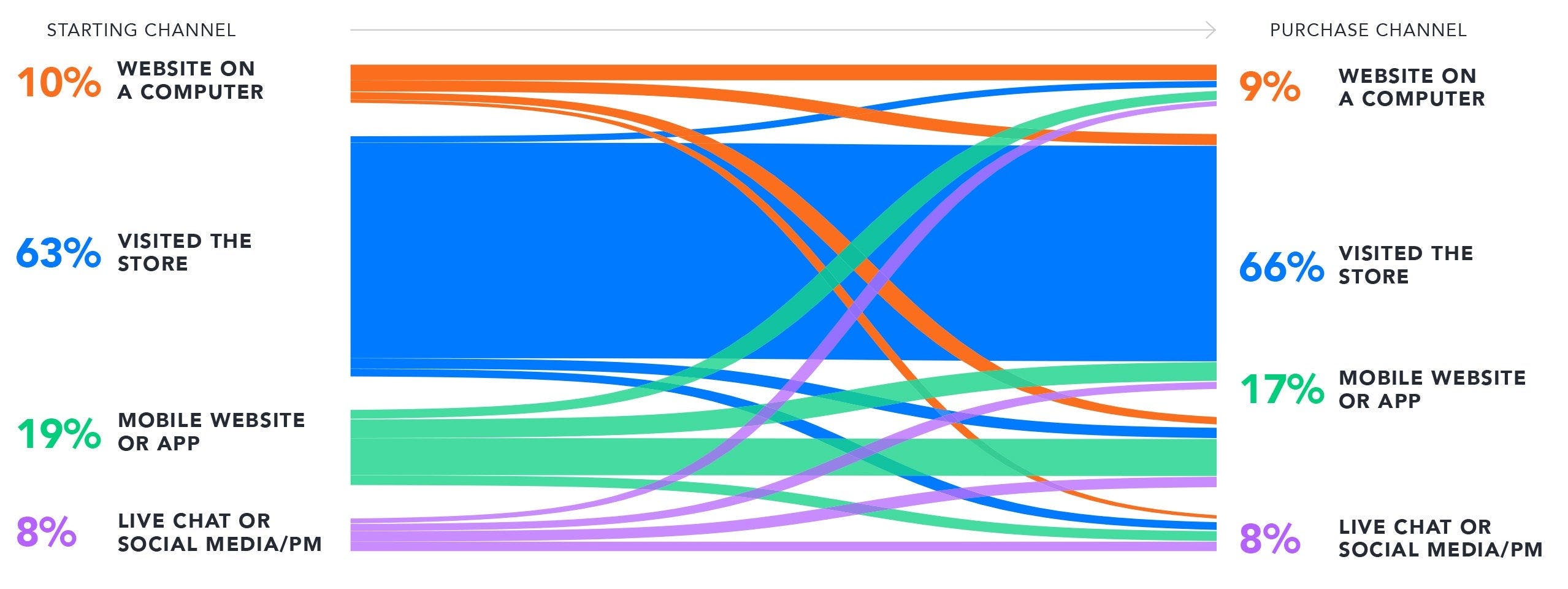
Love Sells: Retailers’ Guide to Valentine’s Day


On February 14, love is all around us—and so is the pressure to purchase. Although there shouldn’t be a price tag on love, Valentine’s Day is a good time to remember the role emotion plays in retail. Let’s take a look at the latest shopping trends that surround Valentine’s Day in 2024.
Love Is for All
Valentine’s Day is not just for lovers anymore. With the spread of alternative interpretations, like Galentine’s Day or the Finnish Friendship Day, February 14 is the time to show appreciation for your loved ones, be them family, friends, romantic partners, or even pets.
According to NRF’s survey, 53% of U.S. consumers plan to celebrate it, and 29% of those who don’t still plan to do something special on this day1.
No matter if you’re a buyer or a seller, it seems you simply can’t escape Valentine’s Day. Barely two months after the retail rush of the winter holidays, consumers and retailers alike are busy preparing for yet another shopping surge.
In Search of the Perfect Gift
Whether we like it or not, Valentine’s Day revolves heavily around gift giving. People tend to pick one (or more) of these five categories: candy or chocolate, greeting cards, flowers, dinner, jewelry2. There’s something eternal about gifting a diamond as a token of love, after all.

This year’s total Valentine’s Day spending is expected to reach $14.2 billion3, with an average of $185.81 per person.4 Out of this sum, flowers made up 39%, while jewelry 22% of all gift purchases.5
Considering these numbers, it’s easy to imagine that florists, jewelers, and luxury retailers can highly profit from people’s emotions—but only if all their retail operations are in order.
Connected Customer Journeys Are Key
With rising costs and inflation rates, consumers in 2024 are increasingly conscious and careful about their purchases. They want to make an informed decision on how they spend their hard-earned dollars.
Shoppers are doing their homework, researching products online and interacting with retailers across multiple online and in-store channels before closing the deal.
Think of the many times you browsed products online, then went to the store to see it in person. If you still liked it, you probably went home to find reviews or check it on social media before buying it from the webshop.
Or, maybe you do it the other way around: first looking at the store selection, then getting reviews online, and going back to the store to ask advice from a store associate before completing the purchase.
Now think of your frustration when any of these steps don’t connect smoothly together. If the product you set your eyes on online is out of stock at the store, so that you cannot get a good look and feel of it—or if there’s no easy return option—you’ll probably abandon the purchase.
And maybe the brand, too.
You’re not the only one with this sentiment.
According to the latest Verint Experience Index: Retail, over two-thirds of U.S. retail customers start or finish their purchase in-store. On the other hand, 37% of all customer journeys begin digitally. This clearly illustrates the importance of connected retail journeys for ensuring great customer experience (CX).
Source: Verint Experience Index: Retail 2023

How to Create Engaging Retail CX Online and In-store
Retailers who manage to bridge the gap between digital and physical shopping with integrated omnichannel journeys can best attract the modern consumer.
A great way to do so is to enable your customers to seamlessly book appointments in any of your stores from your website. This way customers can more readily make in-store visits, increasing store footfall and sales.
A luxury department store saw a 50% boost in in-store appointments after deploying digital appointment booking software, with 78% of appointment customers making a purchase. By sending automated reminders to appointment customers, the same retailer managed to reduce no-shows by 13%.
Proactively managing customer expectations by creating a premium waiting experience for walk-ins is another smart move for retailers for the Valentine’s Day rush—and beyond. No one likes to wait in line for service; some even leave if there’s a long line at the storefront and search for another store.
To avoid that, more and more retailers are now using digital queue management solutions that allow shoppers to join a virtual line for service. Customers on the virtual waitlist can easily keep track of their position in line and estimated wait time, which allows them to stay in control of their shopping journey.
Around Valentine’s Day, goldsmiths and jewelry makers can highly benefit from allowing customers to book a time slot for private jewelry viewing, while florists can manage bouquet orders and pickups more efficiently if they have an online booking and queuing system in use.

Yet, there’s more to Valentine’s Day than material gifts. Gifts of experience are getting more and more popular6, allowing retailers to extend their services to workshops, in-store classes, or even travel holidays.
In such cases, an effective event management solution can make or break the experience for customers who may be looking for memorable gifts of experience beyond a candlelit dinner.
Get the Verint Experience Index: Retail to learn more about customer touchpoints and about optimizing every customer interaction here.
Learn more about Verint’s retail solutions here.
1 NRF: Holiday And Seasonal Trends: Valentine’s Day.
2 NRF: Holiday And Seasonal Trends: Valentine’s Day.
3 NRF: Holiday And Seasonal Trends: Valentine’s Day.
4 NRF: Holiday And Seasonal Trends: Valentine’s Day.
5 NRF: Holiday And Seasonal Trends: Valentine’s Day.
6 NRF: 3 ways consumers are making Valentine’s Day 2023 special.

